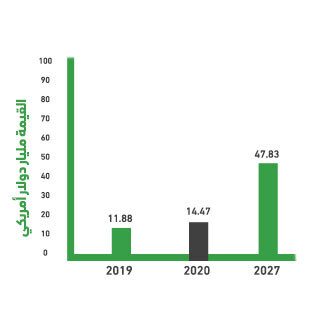The Modern Agricultural Equipment Project is a promising project that aims to support the agricultural sector by providing the latest technologies and tools that contribute to improving agricultural production efficiency. The project focuses on meeting the needs of farmers by offering a variety of equipment such as pumps, electric generators, tractors, plows, harvesting equipment, and modern irrigation systems such as sprinkler and drip irrigation. The role of the Modern Agricultural Equipment Project is not limited to selling equipment only; it also extends to providing technical advice to farmers, helping them choose the equipment best suited to their needs. The project also provides maintenance and repair services to ensure the continued efficient operation of equipment, in addition to making spare parts available at competitive prices and of high quality. The project relies on dealing with reliable suppliers to ensure product quality and is keen to provide appropriate guarantees and flexible financing solutions that facilitate farmers’ acquisition of the necessary tools. Accordingly, the project seeks to enhance agricultural productivity and achieve sustainable development.

A modern agricultural equipment project is an ideal choice for those seeking innovative solutions that enhance the efficiency and quality of agricultural operations. The project boasts a strategic location that is easily accessible, making it a preferred destination for farmers from various regions. The project is keen to provide comprehensive warranties on all equipment, which enhances customer confidence and satisfaction. This project places great emphasis on after-sales services, providing regular maintenance and original spare parts to ensure the continued operation of the equipment at peak efficiency. It includes a team of specialized technicians who provide technical support to customers at all stages of operation. It is worth noting that the project offers its services and products at competitive prices. These advantages make it a destination for those seeking to improve their agricultural production.



Excellent geographical location.
Warranties on all tools, equipment, and machinery sold.
Maintenance and spare parts services provided.
Diverse products and comprehensive services.
Highly qualified technicians.
Discounts and offers for regular customers.
Competitive prices.
Executive summary
Study project services/products
Market Size Analysis
Risk Assessment
Technical study
Financial study
Organizational and administrative study

Service sector in GCC countries
According to the macroeconomic theory of sectors, the economy is divided into three main and large sectors: the first; – is the sector that is based on collecting raw materials and includes mining companies, timber companies, oil exploration companies, in addition to agricultural and fishing industries. The second sector; is the sector that depends on goods and their sale, such as: (car manufacturing, furniture, clothing trade… etc.). As for the third sector, known as the “services” sector; it is the sector responsible for providing and producing services, essentially relying on intangible things, such as: entertainment, health care, transportation, hospitality, restaurants, etc. This theory believes that the more advanced countries are, the more their economies are based on the third sector, unlike primitive countries, which rely mostly on the first sector (the United States of America, for example, the service sector constitutes 85% of its economy).
Kingdom of Saudi Arabia:
The State of Qatar:
Kuwait:
United Arab Emirates:
Sultanate of Oman:
Global Service Sector
The service sector is the major contributor to the world’s gross product; It alone accounts for more than three fifths of this output. The sector does not rely on the production of tangible goods such as automobile and furniture, but rather on the provision of intangible services such as banking, medical care, transportation, hospitality, leisure, etc. The value of the sector market was estimated in 2020 at USD 10,814.49 billion and rose to USD 11,780.11 billion in 2021. The market achieved a CAGR of 8.9%. After recovering from the effects of the coronavirus pandemic, global market experts expect the sector’s market to reach US $ 15683.84 billion by 2025, bringing the market to a CAGR of 7% in the coming years.

Mashroo3k Consulting recommends investing in the services industry, as its contribution to the global GDP increased from 62.8% in 2010 to 65.7% in 2020. According to World Bank data, the contribution of this industry to the global GDP is expected to rise to 69.6% by 2030.